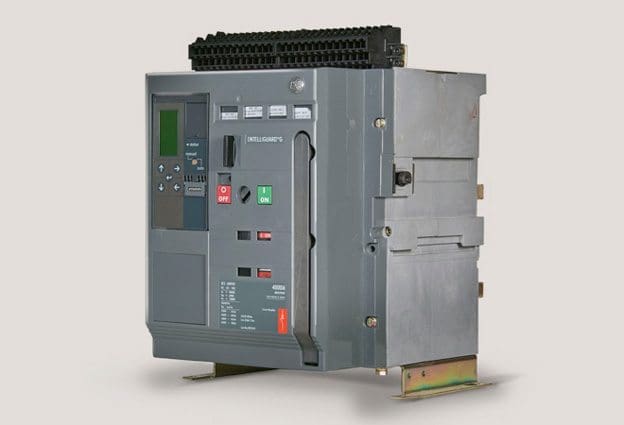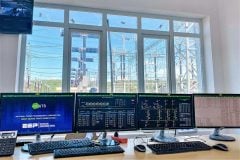Air Circuit Breakers
The basic characteristics for air magnetic circuit breakers are maximum rationalization and constructional simplicity. The major components of such breakers are: the poles, the arc chutes, the base frame, the operating mechanism.

The operating mechanism construction and parts are similar to that of the minimum oil circuit breaker.
The poles include:
- The fixed and moving arcing contacts
- The fixed and moving main contacts
- Epoxy resin bushings
- Moving isolating contacts (main disconnects)
- Pneumatic blow nozzles
- The connections to the coils arc chute
The arc chutes contain:
- The blowout coils
- The arc splitter plates
- The arc runners
- Supporting insulating plates
- The magnet pole pieces
The arc interruption in oil is due to the generation of hydrogen gas because of the decomposition of oil. Arc interruption properties of hydrogen are far superior to air, but air has several advantages which are:
Fire risk and maintenance difficulties associated with oil CB’s are eliminated, arcing products in air are generally removed, whereas oil deteriorates with successive breaking operations, (e.g. formation of carbon) & heavy mechanical stresses set up by gas pressure and oil movement are absent. The arc in the air circuit breaker runs in a mixture of nitrogen, oxygen and copper vapour. When the current is greater than 100A, these gases get dissociated into atoms, which changes the characteristics of the arc, on account of the associated change in its thermal conductivity. The outcome of this is the fact that the discharge suddenly contracts and acquires an appreciably higher core temperature.
The oxygen gas may remain dissociated, even when the current is in the order of 1 amp. The arc is extinguished by lengthening and increasing the voltage gradient. The arc discharge is moved upward by both thermal and electromagnetic (the blowout coils) effects. The arc is then driven into a chute consisting of splitters.
The splitters increase the length of the arc even further, the interspaces between the splitters give improved cooling. Near current zero, the relative high resistance is obtained and the arc quenches.











Please provide price qoutation for air circuit breaker, draw out to replacement of ge breakerM-Pact plus 4000A, 3200, 2500A, 2000A
As an Electrical Engineer i want to get construction data and tests and maintanance procedure guide of ACB.
I have met with some technical problems in my career as a Junior Engineer regarding the LT ACB with the mechanism inside it with most of the breakers are from GE and are M-Pact ACB (old model) ranging from 800-2500 A. So i would be grateful if you could help me in solving these problems.
I would be happy if you would send me your email id so we could discuss the matter.
Thanking You.